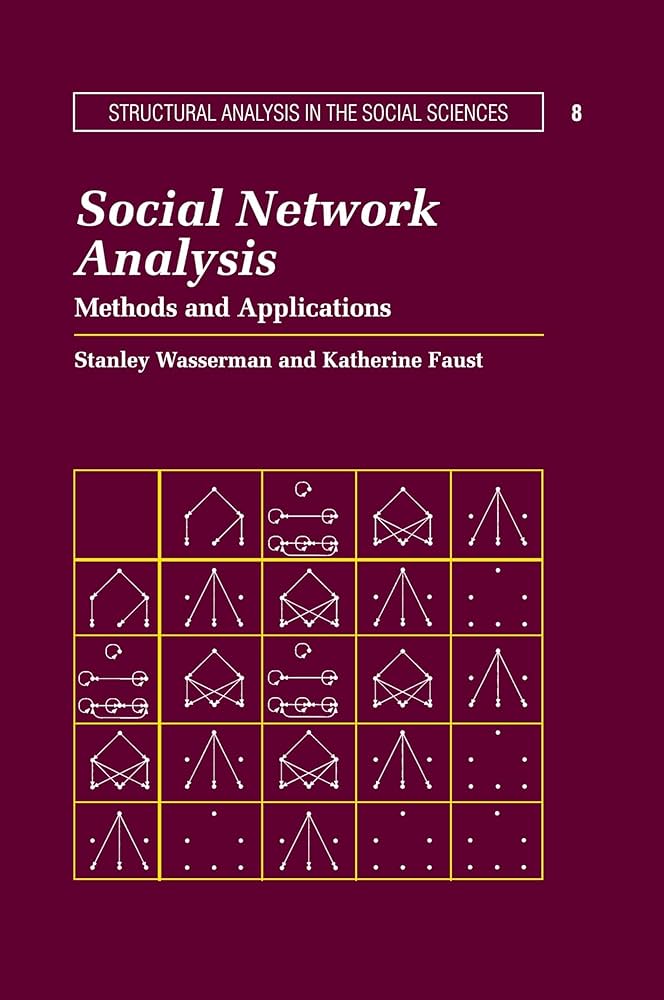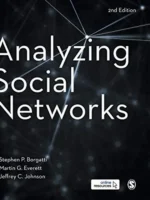Social Network Analysis: Methods and Applications Review
Social Network Analysis by Stanley Wasserman and Katherine Faust is the canonical methods text for SNA. It formalizes the algebra and statistics of networks and remains the standard reference for concepts and measurement.
Overview
Core coverage: graph theory for social data, centrality, cohesion and equivalence, blockmodeling, p* and ERGM foundations, two-mode networks, and methodological issues in data collection and reliability.
Summary
Wasserman and Faust translate graph concepts into social measures and provide the statistical groundwork for modeling ties. They systematize equivalence and blockmodels, connect local structures to global patterns, and lay out early probabilistic models that seeded modern ERGMs.
Authors
Wasserman (statistics) and Faust (sociology) integrate disciplines, producing a rigorous yet widely usable manual.
Key Themes
Networks as measurable social structure; equivalence as a lens on roles; formal models to move from description to inference.
Strengths and Weaknesses
Strengths: depth, clarity, and durable definitions that underpin today’s tools. Weaknesses: pre-digital examples and limited longitudinal/temporal modeling compared with newer texts. Use as a foundation, then extend.
Target Audience
Graduate students, methodologists, and practitioners who need a solid conceptual and mathematical base for SNA.
Favorite Ideas
Structural and regular equivalence; cohesive subgroups vs communities; algebraic approaches to roles and positions.
Takeaways
Master the core measures and algebra first. They generalize across software and domains and anchor modern statistical models for networks.





